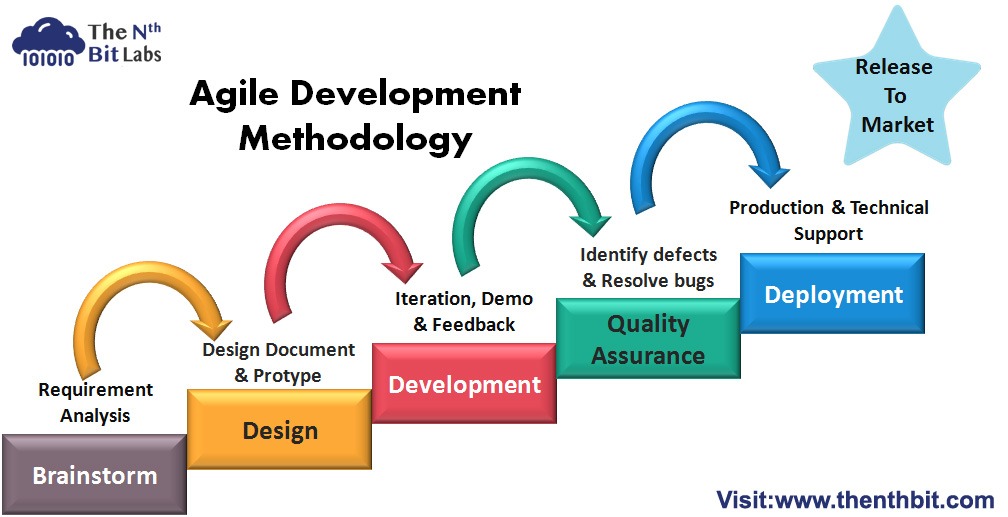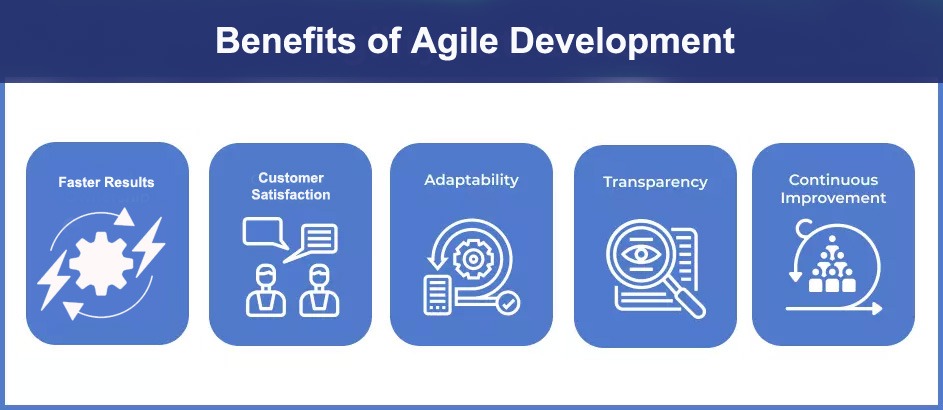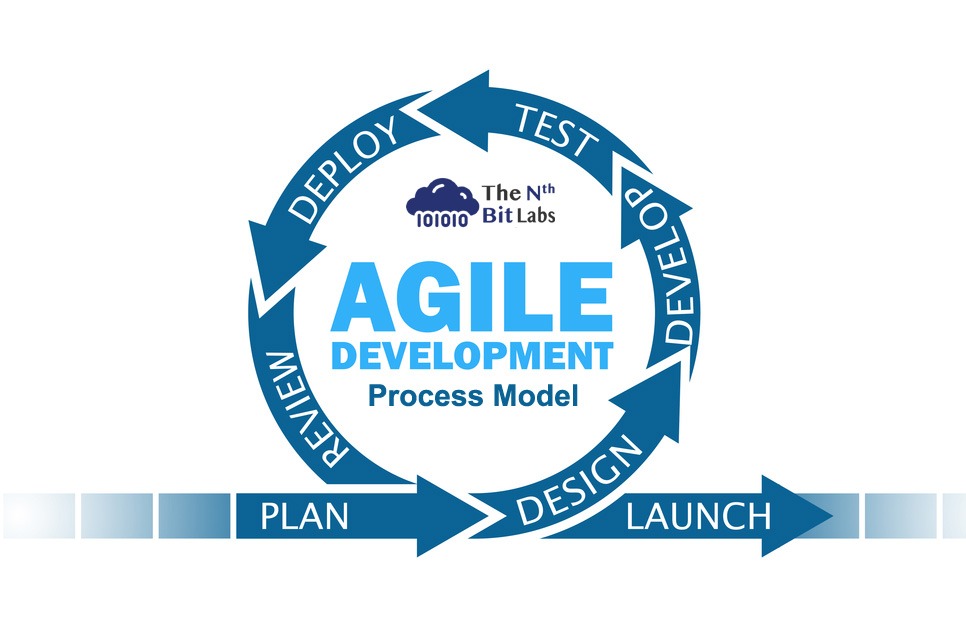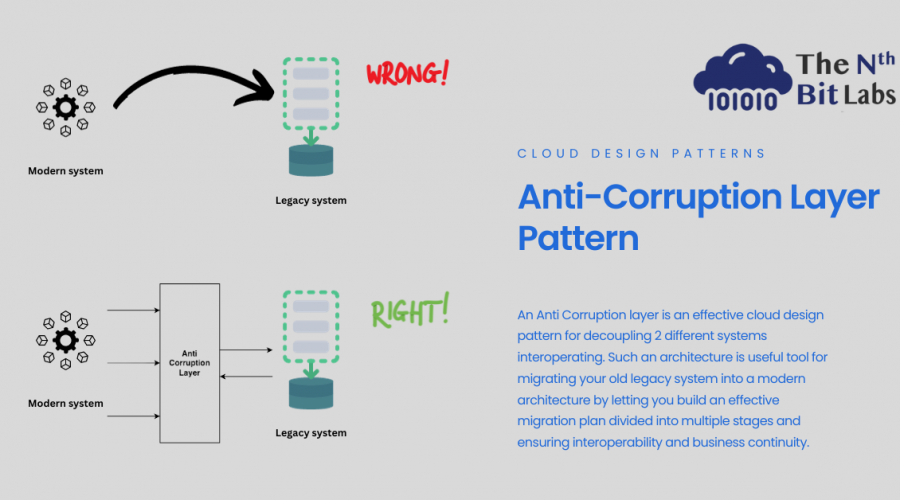Agile software development is an iterative and flexible approach to software development that emphasises collaboration, adaptability, and customer satisfaction. It was created as an alternative to traditional software development methodologies, which often followed a linear, sequential process.
In agile development, the software is developed in small increments called “sprints” or “iterations.” Each iteration typically lasts a few weeks and results in a usable and potentially shippable piece of software. The process involves close collaboration between cross-functional teams, including developers, testers, designers, and stakeholders.
But why are agile development methodologies so important? Let’s understand it from scratch. We’ll try to cover every aspect of it for your better understanding.
What are Agile Development Methodologies?
Agile development methodologies are ways of building software that focuses on flexibility, collaboration, and delivering value quickly. It’s like baking a cake in small, delicious steps!
Imagine you want to bake a cake, but you’re not sure exactly how it should taste. Instead of making a detailed plan and following it strictly, the software agile model allows you to start with a basic recipe and make improvements along the way.

In agile, you work in short bursts called sprints, just like baking in small batches. Each sprint produces a piece of the cake, which you can test and adjust. This helps you get feedback early and make changes if needed. You involve your fellow developers in the process who test the system in a phased manner and share their opinions. This collaboration ensures that the system is working properly and eliminates the possibility of a huge technical failure.
Agile development also encourages teamwork. Each person has a role, like a software architect, a developer, and a tester. They work together closely, communicating daily to share progress and challenges. This way, everyone stays on the same page and helps each other out.
With agile, you can adapt to changes easily. If someone asks for a different flavour or decoration, you can adjust the recipe without starting from scratch. This flexibility allows you to create a cake that meets everyone’s desires.
By using agile methodologies, software development teams can create high-quality software more efficiently, involve customers throughout the process, and make sure the end result is a delightful experience for everyone involved.
Benefits of Agile Development?
Agile development brings several benefits. Some of them are listed below:

Faster Results:
Agile allows for quicker delivery of valuable software. It breaks the development process into small, manageable increments, ensuring that usable portions of the software are available early on.
Customer Satisfaction:
Agile puts a strong emphasis on involving customers or end-users throughout the software development process. This means that their feedback is continuously incorporated, ensuring that the final product meets their needs and expectations.
Adaptability:
Agile methodologies are designed to handle changes effectively. As customer needs evolve or new requirements emerge, the development team can easily adjust their plans and priorities, ensuring that the software remains relevant and up to date.
Collaboration and Transparency:
Agile promotes collaboration and open communication within the development team and with stakeholders. Regular meetings and feedback loops foster a sense of teamwork, leading to a better understanding of goals, challenges, and progress.
Continuous Improvement:
Agile encourages a culture of continuous learning and improvement. Through regular reflections and retrospectives, teams identify areas of improvement, address challenges, and refine their processes, ultimately delivering higher-quality software.
By embracing agile development, teams can achieve faster results, increase customer satisfaction, adapt to changes efficiently, collaborate effectively, and continuously improve their software development practices.
Agile Model in Software Engineering
An agile model in software engineering is a methodology or framework that applies the principles of agile software development. It provides a structured approach to managing and delivering software projects iteratively and flexibly.
The main uses of software agile models are to enhance collaboration, improve adaptability, and deliver high-quality software efficiently. Agile models, such as Scrum, Kanban, and Extreme Programming (XP), offer specific frameworks, practices, and roles to support the agile development process.

These models promote close collaboration between team members, stakeholders, and customers throughout the project. They encourage continuous feedback and iteration, enabling the team to adapt to changing requirements and priorities. Agile models also emphasise regular reflection and improvement, fostering a culture of learning and innovation within the team.
By adopting an agile model, software development teams can streamline their processes, enhance productivity, increase customer satisfaction, and deliver value more effectively. The iterative nature of software agile models allows for faster time to market, better risk management, and the ability to respond quickly to market demands and emerging technologies.
Final Words
In conclusion, agile software development is a dynamic and customer-focused approach that emphasises collaboration, adaptability, and delivering value quickly. By breaking down projects into manageable iterations, involving customers throughout the process, and fostering a culture of continuous improvement, agile methodologies empower software teams to respond to changing requirements and market demands effectively.
Agile methodology is crucial in a software development process which is why you have to pay attention while choosing your software development team. The Nth Bit Labs is a team of expert developers that has the reputation of transforming your digital products with an agile and process-oriented approach.






